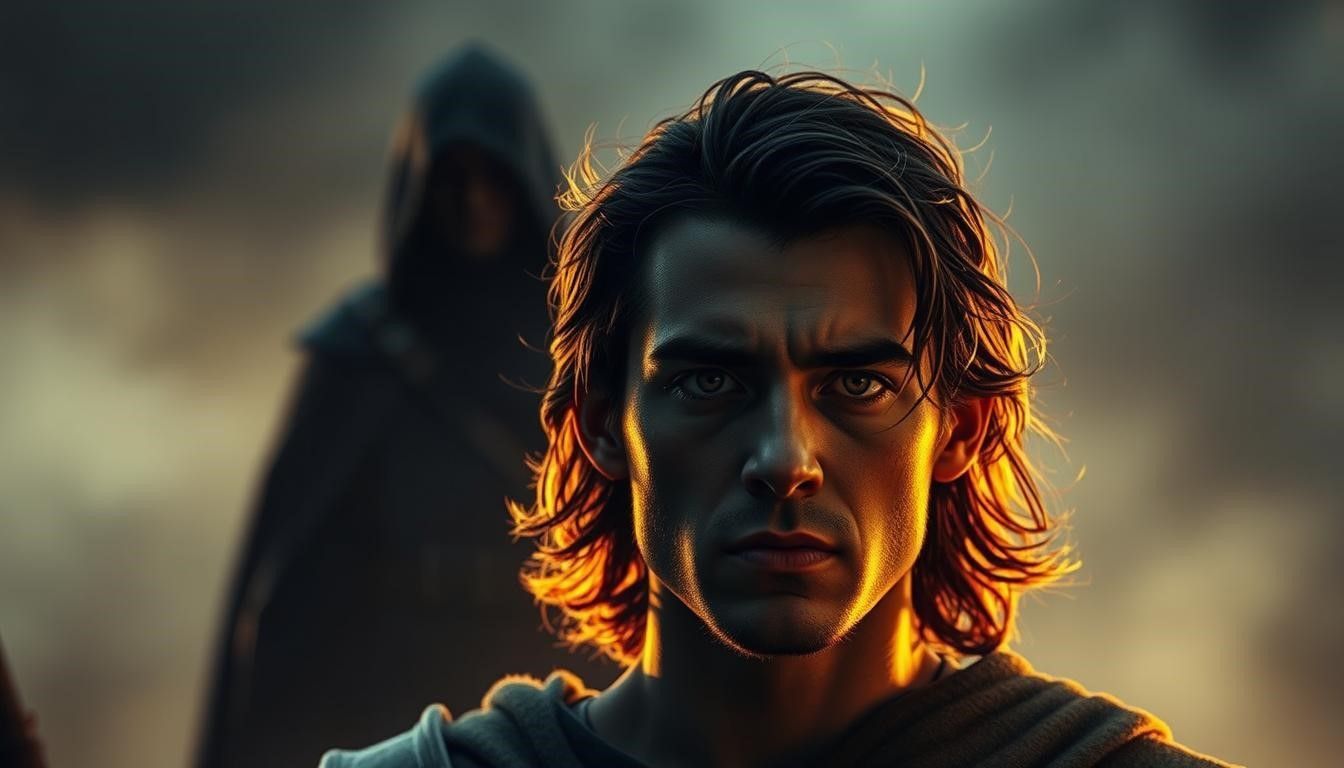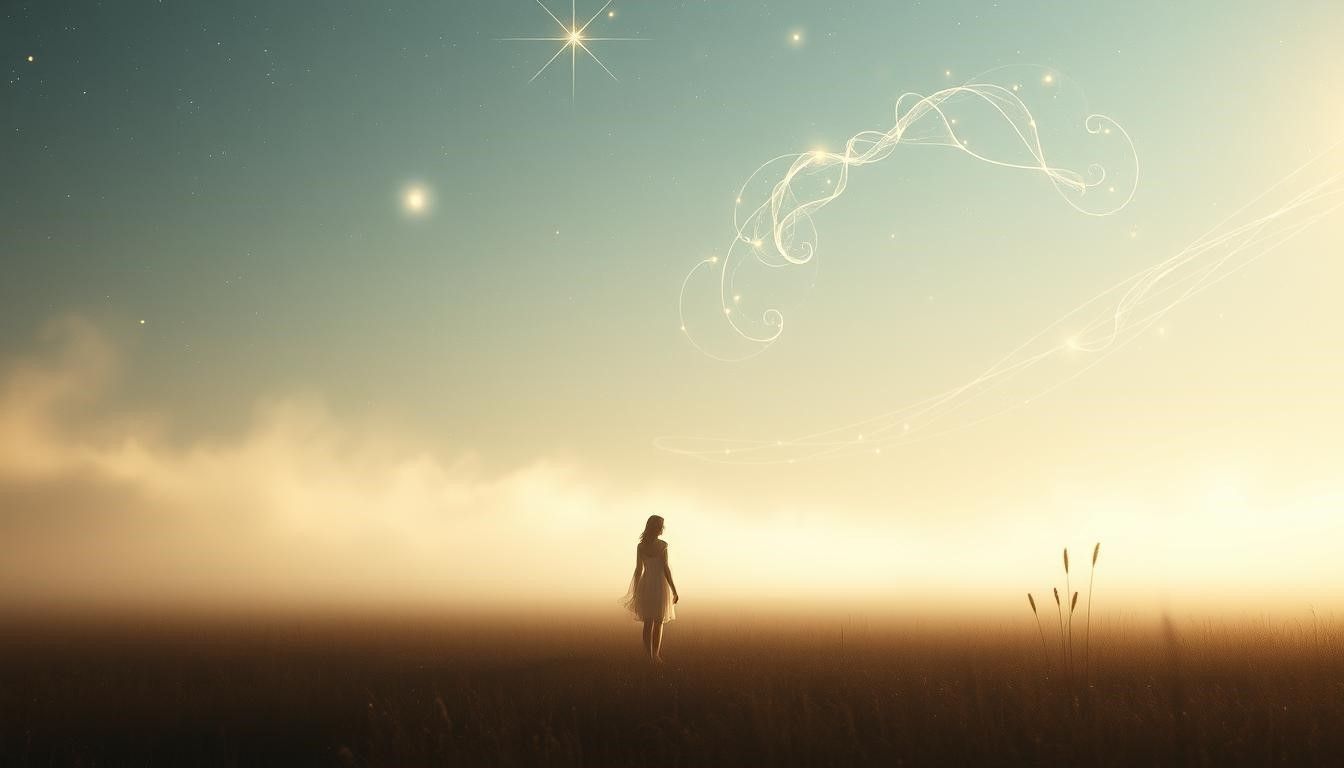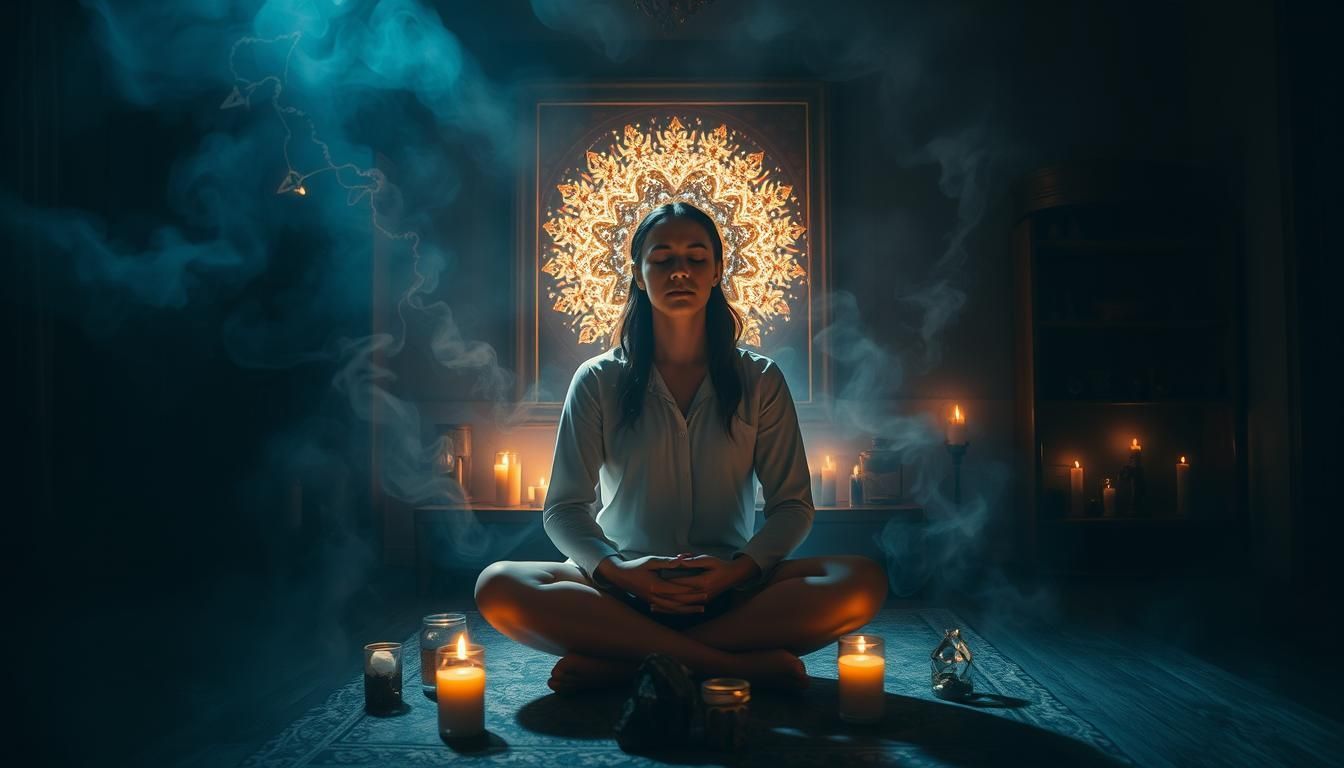Why Noir-Style Narratives Are Making a Comeback
The
film noir genre, which emerged in the 1940s and 1950s, has seen a significant resurgence in recent years. Characterized by its dark and morally complex themes,
film noir captured the anxieties of the post-World War II era.
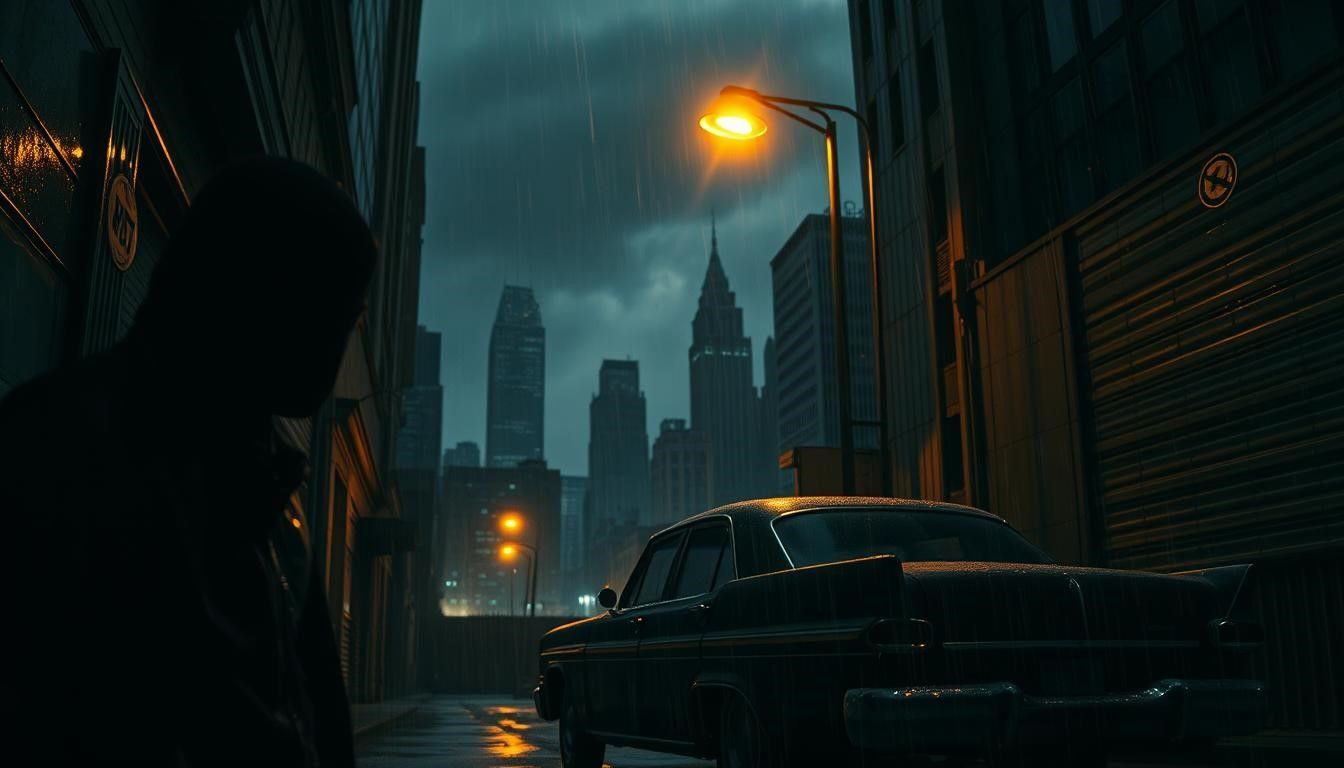
Ralph Riccie, a long-time enthusiast of the noir genre, notes that its themes of alienation and corruption continue to resonate with modern audiences. The unique visual style of noir, with its high-contrast lighting and unconventional camera angles, has also been reimagined in contemporary film and literature.
The comeback of
noir-style narratives reflects our collective desire to explore moral ambiguity in uncertain times, much like the original
noir movement emerged from post-war disillusionment.
Key Takeaways
- The noir genre has experienced a significant resurgence across multiple media platforms.
- Contemporary creators are reimagining the elements of noir for modern audiences.
- The themes of noir continue to resonate with audiences today.
- Ralph Riccie's extensive collection of noir literature and films offers unique insights into the genre.
- The visual style of
noir has been reimagined in contemporary
film and literature.
The Enduring Allure of Noir
Noir's enduring appeal lies in its ability to reflect the anxieties and fears of society, making it a recurring theme in popular culture. This genre has captivated audiences for decades with its dark, gritty narratives and complex characters.
Ralph Riccie's Perspective on Noir's Timeless Appeal
Ralph Riccie, a long-time enthusiast of the noir genre, attributes its timeless appeal to its ability to adapt to contemporary societal concerns. With an extensive collection of noir DVDs and books, Riccie's appreciation for the genre is evident. According to Riccie, the core elements of noir remain unchanged despite its evolution over time.
"Noir is more than just a
genre; it's a reflection of our darkest selves," Riccie notes. This perspective is echoed in the way noir
stories have been retold and reinterpreted across different eras, maintaining their relevance.
The Cyclical Nature of Narrative Trends
The influence of film noir can be seen in the neo-noir film movements of the 1970s and beyond. Narrative trends in popular culture follow cyclical patterns, with certain genres rising to prominence during specific societal conditions. Noir first emerged during post-World War II disillusionment and saw resurgences in the post-Watergate era and now, again, in our current period of social and political uncertainty.
Each revival of noir adapts its core elements to address contemporary anxieties while maintaining its fundamental stylistic and thematic foundations. Understanding these narrative cycles helps explain why noir-style
stories feel both timeless and urgently relevant to each new generation that discovers them.
The Origins of Noir-Style Narratives
The noir narrative style has its foundations in the literary works of authors like Raymond Chandler. Emerging in the early 20th century, hard-boiled detective fiction laid the groundwork for the film noir genre that would follow. This literary movement was characterized by its dark, gritty portrayal of urban life and the morally ambiguous characters that inhabited it.
From Hard-Boiled Detective Fiction to Film
The transition from hard-boiled detective fiction to film noir was a natural progression, driven by the visual and narrative potential of cinema. Directors like Billy Wilder and Fritz Lang brought the dark, stylized world of noir to the screen, capturing the anxieties and disillusionments of post-World War II America. Film noir reflected the harsh realities of the time, presenting a world where traditional values were under scrutiny.
Post-War Disillusionment and Cultural Context
The aftermath of World War II created a fertile ground for noir to flourish. As society grappled with profound disillusionment and uncertainty,
noir narratives provided a way to process these complex emotions. The genre's focus on moral ambiguity and corruption resonated with audiences experiencing a changed
world, where the old
values seemed less stable. At this
time,
film noir became a reflection of the societal anxieties, capturing the essence of a generation's fears and doubts.
| Characteristics | Literary Noir | Film Noir |
|---|---|---|
| Narrative Style | Hard-boiled detective fiction | Non-linear storytelling, voice-over |
| Visuals | Dark, gritty descriptions | High contrast, shadows, noir aesthetic |
Defining Elements of Classic Noir
At the heart of classic noir are defining elements that include both visual style and narrative techniques. These components work together to create the distinctive atmosphere and complex storytelling that characterize the genre.
Visual Style: Shadows, Contrast, and Composition
The visual style of film noir is marked by the use of shadows, high contrast, and deliberate composition. High contrast lighting creates deep shadows, adding depth and complexity to scenes. This visual approach not only enhances the mood but also reflects the moral ambiguity of the characters and their situations.
As noted by film critics, "The use of shadows and lighting in film noir is not just aesthetic; it's a narrative tool that guides the audience's perception and emotional response."
The interplay of light and shadow becomes a visual metaphor for the characters' inner struggles and the blurred lines between good and evil.
Narrative Structure: Non-Linear Storytelling and Voice-Over
The narrative structure of classic noir often employs non-linear storytelling and voice-over narration. Non-linear plotlines and flashbacks are used to reveal the protagonist's backstory and create suspense. Voice-over narration provides direct insight into the protagonist's thoughts, creating a sense of intimacy and immediacy.
- Classic noir frequently uses non-linear narrative structures to convey the complexity of the protagonist's situation.
- First-person voice-over narration is a hallmark of the genre, allowing audiences to experience the story through the protagonist's eyes.
- This narrative approach fosters a sense of fatalism, as the audience is often aware from the beginning that the protagonist's situation will end in tragedy.
By combining these visual and narrative elements, classic noir creates a unique and captivating cinematic experience that continues to influence filmmakers today.
The Psychology Behind Noir's Appeal
The allure of noir narratives lies in their ability to tap into our deepest psychological fears and desires. Film noir often delves into the psychological motivations behind criminal behavior, exploring the inner lives of its morally compromised characters.
This exploration is reflected in the genre's use of first-person narration and flashbacks, providing insight into the characters' thoughts, memories, and desires. By doing so, noir fiction creates a contained world where audiences can vicariously experience moral transgression without real-world consequences.
Moral Ambiguity and Complex Characters
Noir narratives are characterized by their morally ambiguous characters, whose complex motivations and actions drive the plot. These characters' inner conflicts and gray moralities resonate with audiences, making them more relatable and human.
Exploring the Shadow Self Through Fiction
Noir stories allow audiences to safely explore the darker aspects of human nature—what Jungian
psychology calls the "shadow self"—through fictional characters. This psychological exploration helps explain why noir appeals to otherwise law-abiding citizens who would never act on the impulses depicted in these stories.
The Femme Fatale: Evolution of an Archetype
In the realm of noir, the femme fatale has evolved significantly, reflecting changing societal attitudes towards gender and power. This character archetype, known for her seductive charm and mysterious nature, has been a staple of noir narratives.
Traditional Representations in Classic Noir
Traditionally, the
femme fatale was portrayed as a mysterious and alluring woman who manipulated men to achieve her goals. In classic
noir films, she was often depicted as a villain or anti-hero, using her charm and beauty to lure protagonists into trouble. These traditional representations were largely influenced by the societal attitudes of the time, reinforcing stereotypes about women and their roles.
Modern Reinterpretations and Subversions
Modern film adaptations have reimagined the femme fatale, giving her more psychological depth and complexity. For instance, Amy Dunne in "Gone Girl" (2014) is a quintessential modern femme fatale, with a narrative that subverts traditional expectations. The character's motivations and actions are explored in depth, providing a nuanced portrayal that comments on contemporary gender politics and power dynamics.
Contemporary
noir narratives have also begun to flip the gender script, featuring male characters who embody the traditional traits of the
femme fatale. This evolution demonstrates the archetype's adaptability and relevance in addressing changing social attitudes about gender and agency.
Noir-Style Narratives Across Different Media
The noir genre has expanded its reach, influencing a wide range of media, including literature, film, and television series. This expansion has led to a diverse array of noir-style narratives, each offering unique interpretations of the genre's core themes and visual styles.
Literature: From Chandler to Contemporary Crime Fiction
Literature has been a cornerstone of noir narratives, with authors like Raymond Chandler pioneering the hard-boiled detective fiction genre. Contemporary crime fiction continues this legacy, with many authors incorporating noir elements into their work. The complexity and moral ambiguity characteristic of noir literature have captivated readers, making it a enduring aspect of the genre.
Film: Classic Cinema to Neo-Noir
Film noir has a rich history, from the classic cinema of the 1940s and 1950s to the neo-noir movement of the 1970s and beyond. Directors have used the visual and narrative techniques of noir to explore complex themes and moral ambiguities. The influence of noir can be seen in many films, from the stylized visuals of classic noir to the modern reinterpretations of neo-noir.
Television: Noir Influences in Modern Series
Television has embraced noir-style narratives in recent years, with series like "True Detective," "Fargo," and "Sharp Objects" adapting noir conventions to the long-form storytelling format. The extended runtime of television allows for deeper character development and more complex plotting than traditional film noir, while maintaining the genre's visual style and thematic concerns.
The Neo-Noir Renaissance of the 1970s-1990s
The 1970s to 1990s saw a significant resurgence in noir-style narratives, giving birth to the neo-noir genre. This period was marked by a fresh wave of filmmakers reimagining classic noir themes for contemporary audiences.
Chinatown, Blade Runner, and L.A. Confidential
Films like Chinatown, Blade Runner, and L.A. Confidential epitomized the neo-noir renaissance. These movies not only updated classic noir tropes but also incorporated elements from other genres, such as science fiction and mystery.
- Neo-noir filmmakers reimagined classic noir tropes for contemporary audiences, maintaining the genre's essence while updating its conventions.
- These films typically featured more explicit violence and sexuality than was possible under the Production Code that governed classic noir.
How Neo-Noir Reimagined Classic Tropes
Neo-noir expanded noir's thematic concerns to address contemporary issues like environmental destruction, corporate power, and technological alienation. The femme fatale archetype was reimagined with greater psychological depth and sometimes more sympathetic portrayals.
- Neo-noir demonstrated how noir's core elements could be successfully combined with other genres, including science fiction, horror, and the Western, creating hybrid forms that expanded the genre's possibilities.
The neo-noir genre revitalized the classic noir style, offering a fresh perspective on traditional narratives and cementing its place in the film industry.
Noir Themes in Contemporary Storytelling
The enduring appeal of noir lies in its ability to mirror the societal issues of any era, including our own. Contemporary storytelling often draws upon noir themes to explore the complexities and challenges of modern life. These themes continue to captivate audiences with their dark, gritty portrayal of the world.
Noir narratives have evolved to address the intricacies of modern society, maintaining their relevance in contemporary storytelling. Two significant areas where noir themes are particularly pertinent are in exploring alienation and existential crisis, as well as corruption and power dynamics.
Alienation and Existential Crisis in Modern Society
Modern noir narratives often delve into the alienation and existential crises faced by individuals in today's society. The genre portrays characters who are disconnected and struggling to find their place in a seemingly indifferent world. This theme resonates with audiences who are experiencing similar feelings of isolation and disorientation.
Corruption and Power Dynamics in Today's Context
Corruption and power dynamics remain central themes in contemporary noir. The influence of corporate power, technological surveillance, and media manipulation are modern manifestations of the systemic corruption found in classic noir. These narratives explore the interconnected nature of global power structures, providing rich material for storytellers to examine corruption on a larger scale than was typical in classic noir.
By exploring these themes, contemporary noir narratives offer a commentary on the state of the world, highlighting issues such as class divisions and economic inequality. These explorations make noir an effective vehicle for social criticism while maintaining the genre's entertainment value.
The Digital Age and Noir Aesthetics
In the modern world, noir narratives have found a new playground in the digital realm, reflecting contemporary societal concerns. The noir genre, known for its dark and gritty storytelling, has seamlessly adapted to the digital age, incorporating elements that resonate with today's audiences.
The influence of technology on noir narratives is multifaceted. On one hand, technology serves as a tool for both protagonists and antagonists, advancing the plot and creating tension. On the other hand, it poses an existential threat, echoing the genre's classic themes of corruption and moral ambiguity.
Social Media's Impact on Identity and Deception
Social media has revolutionized the way identity is constructed and perceived, a theme that is central to noir narratives. The ability to curate a digital persona allows for deception and misrepresentation, echoing the genre's exploration of identity and reality.
As noted by film critic,
"The digital age has given noir a new canvas to explore the complexities of human identity." This observation highlights the significance of social media in modern noir storytelling, where characters navigate a world where truth is often obscured.
- Digital surveillance and data manipulation have become key elements in contemporary noir plots.
- The noir aesthetic has adapted to digital filmmaking techniques, with directors using color grading and composition to create a modern visual style.
Technology as Both Tool and Threat in Modern Noir
In modern noir narratives, technology is a double-edged sword. It enables characters to uncover truths and track down culprits, but it also poses significant risks, such as hacking and data breaches.
| Technological Element | Narrative Impact |
|---|---|
| Digital Surveillance | Increases tension and paranoia among characters |
| Data Manipulation | Creates complexity in plot twists and character motives |
| Advanced Hacking | Serves as a tool for protagonists to uncover hidden truths |
Neo-noir films like Blade Runner have successfully merged noir with science fiction, applying noir's visual style and existential themes to a dystopian future setting. This blend of genres has resulted in a captivating narrative that explores the impact of technology on human identity and agency.
The adaptability of noir aesthetics to the digital age is a testament to the genre's enduring appeal. As technology continues to evolve, it is likely that noir narratives will continue to incorporate new elements, maintaining their relevance in the modern world.
"The noir genre's ability to evolve with technological advancements ensures its continued relevance in contemporary storytelling."
Why Audiences Are Returning to Noir in Uncertain Times
The resurgence of noir-style narratives can be attributed to their ability to mirror the moral ambiguities of our contemporary world. As we navigate through complex societal issues and personal dilemmas, the appeal of noir has seen a significant increase.
There are several reasons why noir is experiencing a comeback. Let's explore some key factors:
- Paradoxically, noir's moral complexity offers a kind of comfort to audiences navigating an increasingly complex and morally ambiguous real world.
- Unlike simplistic narratives that present clear heroes and villains, noir acknowledges the ethical gray areas that most people recognize from their own lives.
- There's a certain relief in seeing characters struggle with the same moral compromises and difficult choices that viewers face in their own lives.
Parallels Between Post-War Era and Today's Social Climate
The original film noir emerged in the post-World War II era, a time of significant social and economic upheaval. Similarly, today's world is grappling with its own set of challenges, from political instability to social inequality.
The parallels between these two periods are striking, with both being characterized by a sense of uncertainty and disillusionment. It's in these times that
noir narratives find fertile ground, offering a reflection of the anxieties and fears of the audience.
The Comfort of Moral Complexity
Noir stories validate the experience of trying to do the right thing in situations where the right thing isn't always clear. This validation provides a sense of comfort to viewers who are navigating their own complex moral landscapes.
The
moral complexity of
noir makes it more intellectually and emotionally satisfying for mature audiences than more simplistic narrative forms. By engaging with
noir narratives, viewers can process their own emotions and ethical dilemmas in a safe and controlled environment.
Notable Contemporary Examples of Noir Revival
Modern entertainment is experiencing a resurgence of noir elements, captivating viewers worldwide. This revival is evident across various media, including film, literature, and television.
Gone Girl: The Modern Femme Fatale
Gone Girl, directed by David Fincher, is a prime example of noir's influence on contemporary storytelling. The film's portrayal of Amy Dunne as a complex, manipulative femme fatale embodies the classic noir archetype.
The twist in the narrative keeps viewers on the edge, showcasing the dark side of marriage and relationships.
True Detective: Southern Gothic Meets Noir
The anthology series
True Detective often incorporates noir elements, particularly in its first season. The dark, atmospheric storytelling and morally complex characters are hallmarks of the noir genre. The show's use of non-linear narrative and exploration of themes like existential crisis resonate with noir's traditional motifs.
Blade Runner 2049: Futuristic Noir Reimagined
Blade Runner 2049 is a futuristic example of noir's adaptability. Denis Villeneuve's direction maintains the visual signatures of noir—high-contrast lighting and atmospheric environments—while exploring themes of identity and humanity. The protagonist, K, is a classic noir detective, isolated and morally conflicted.
These contemporary examples demonstrate noir's enduring influence on modern storytelling, adapting its themes and aesthetics to new contexts.
Noir-Style Narratives in Unexpected Places
Noir-style narratives have transcended traditional media, finding new life in unexpected places. The genre's dark, stylized storytelling has captivated audiences across various platforms, from visual arts to interactive entertainment.
Animation and Graphic Novels Embracing Noir
The visual language of noir has been effectively used in animation and graphic novels. For instance, the film
Sin City (2005) combines elements of animation, comic books, and live-action filmmaking, creating a new hybrid genre. Graphic novels and animated series have also adopted noir's visual style, using shadows, contrast, and composition to evoke a sense of mystery and tension.
Video Games and Interactive Storytelling
Video games have emerged as a surprisingly effective medium for noir-style narratives. Titles like "L.A. Noire," "Max Payne," and "Disco Elysium" have embraced the genre's themes and aesthetics. The interactive nature of games allows players to embody the noir detective, making choices and experiencing the moral ambiguity that defines the genre. Game developers have successfully adapted noir's visual style through lighting, camera angles, and color palettes that evoke classic film noir.
The branching narrative possibilities in games add new dimensions to noir's exploration of choice and consequence. These interactive noir experiences demonstrate the genre's ability to evolve with new technologies while maintaining its core identity.
Creating Your Own Noir-Style Narrative
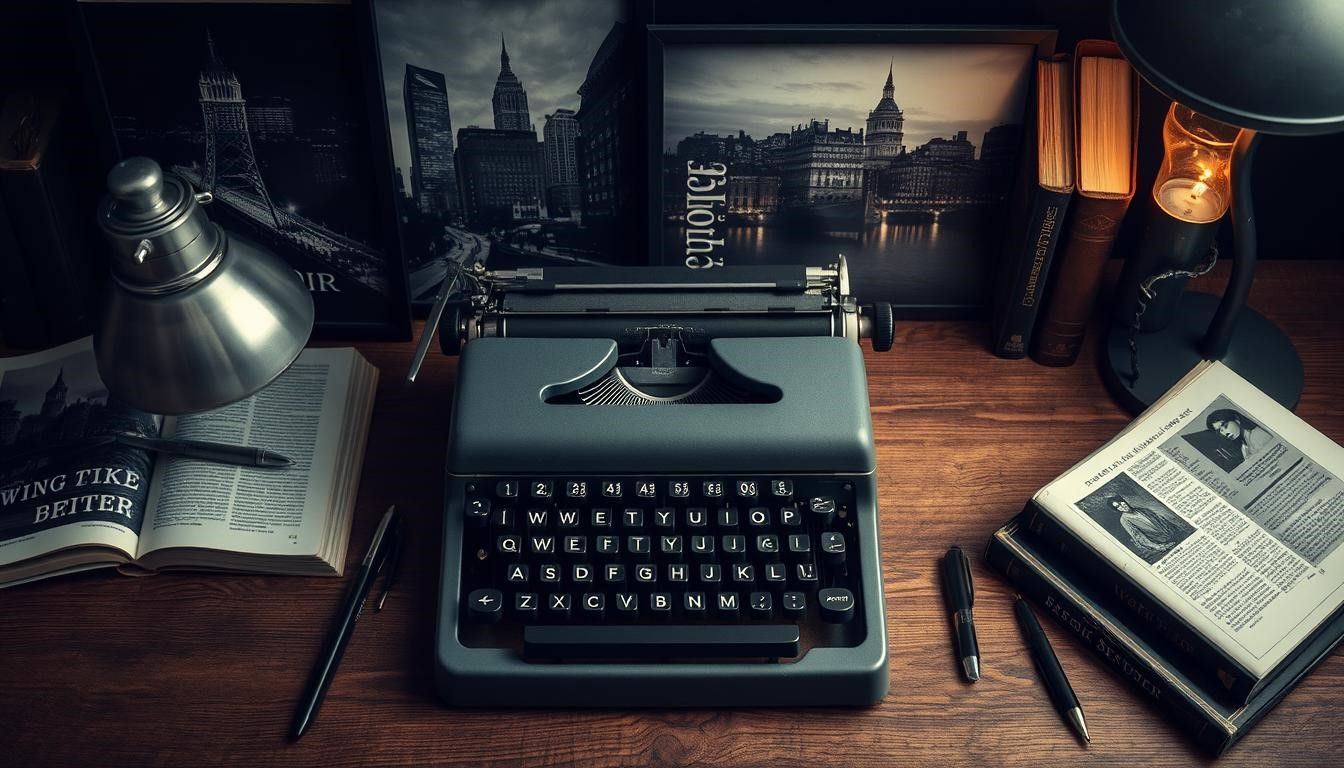
Embarking on the journey to write noir fiction means embracing a world of moral ambiguity and complex characters. To craft a compelling narrative, it's essential to understand the core elements that define the noir genre.
Essential Elements to Include
When creating a noir-style narrative, several key elements must be considered. The
protagonist should be flawed and relatable, with a compelling backstory that informs their actions throughout the story. The
femme fatale character should have clear motivations beyond being merely evil, adding depth to the narrative. Incorporating a sense of moral ambiguity and complex characters will enrich your story, making it more engaging for readers.
Common Pitfalls to Avoid
Avoid using noir elements as mere window dressing without engaging with the genre's deeper themes. Resist creating one-dimensional characters, and don't confuse style for substance—noir requires both its distinctive aesthetic and thematic depth to work effectively. Be mindful of anachronistic elements that can break immersion unless you're deliberately creating a hybrid or pastiche. Ensuring your
protagonist is flawed yet compelling is crucial for audience investment in their journey.
The Future of Noir: Emerging Trends
Noir's enduring appeal lies in its ability to evolve, incorporating diverse perspectives and styles. As the genre continues to captivate audiences, it's being reshaped by innovative trends that blend traditional elements with modern twists.
Blending Noir with Other Genres
The neo-noir films have long incorporated elements of other genres, such as science fiction or horror, while maintaining the essential elements of the noir style. For instance,
Blade Runner (1982) merged noir with science fiction, applying noir's visual style and existential themes to a dystopian future setting.
| Genre | Noir Elements | Resulting Style |
|---|---|---|
| Science Fiction | Existential themes, visual style | Futuristic Noir |
| Horror | Dark atmosphere, moral ambiguity | Noir Horror |
Diverse Voices Reshaping Noir Conventions
The future of noir will be shaped by diverse voices bringing new perspectives to the genre's traditional conventions. Writers and filmmakers from underrepresented groups are reimagining noir's exploration of power dynamics, corruption, and moral ambiguity from different cultural viewpoints.
International noir is flourishing, with distinctive regional variations emerging from Scandinavian noir to Asian noir to Latin American noir. These diverse perspectives ensure noir's continued evolution and relevance by expanding the range of stories that can be told within the genre's framework.
Ralph Riccie's Collection: A Window into Noir Evolution
Ralph Riccie's noir collection is a treasure trove for enthusiasts, offering insights into the genre's transformation over the years. With a career spanning over 40 years in quality and finance, Riccie's passion for noir has led him to curate an extensive collection of DVDs and books on the subject.
Key Works That Showcase Noir's Transformation
Ralph Riccie's collection includes seminal works that have shaped the noir genre. From classic films like "Double Indemnity" to literary masterpieces by Chandler and Hammett, his collection provides a comprehensive overview of noir's evolution.
Riccie recommends starting with these foundational works to understand the genre's roots before exploring its modern variations.
Lessons for Aspiring Noir Enthusiasts
For those looking to delve deeper into noir, Riccie offers several valuable lessons. He emphasizes the importance of understanding the historical and cultural context of noir works, which enhances appreciation of their themes and innovations.
Additionally, Riccie suggests exploring
noir across different media, including literature, film, television, and graphic novels, to fully appreciate the
genre's versatility. Through his website and books, Riccie shares his insights and recommendations for those looking to develop their own
noir expertise.
Conclusion: The Timeless Resonance of Shadows and Light
The timeless resonance of noir-style narratives is a testament to the genre's ability to reflect and comment on societal issues. At its core, noir is about exploring the complexities of human nature, delving into our capacity for both good and evil, and our struggle to navigate moral ambiguity.
The interplay of shadows and light that defines noir's visual style serves as a perfect metaphor for the moral complexity at the heart of the genre's storytelling. This visual dichotomy is not just aesthetically pleasing; it also underscores the nuanced exploration of human morality that noir is known for.
Ralph Riccie's extensive collection and analysis demonstrate that
noir has proven remarkably adaptable, maintaining its essential character across different eras, media, and cultural contexts. As a result, the genre continues to evolve and captivate new audiences. For those interested in exploring
noir further, Riccie's insights and recommendations are available through his website and published works, offering a knowledgeable guide to this enduring genre.
The current revival of
noir-style narratives in
film and other media suggests that the genre will continue to resonate with audiences as long as people are fascinated by the darker aspects of human nature.
Frequently Asked Questions About Noir-Style Narratives Are Making a Comeback
What are the key elements that define a classic noir narrative?
Classic noir is characterized by its visual style, which often features high contrast, shadows, and a predominantly dark color palette. Additionally, non-linear storytelling, complex characters, and a sense of moral ambiguity are also hallmarks of the genre.
How has the femme fatale archetype evolved over time?
The femme fatale has undergone significant transformations, from the traditional representations in classic noir to modern reinterpretations and subversions. Contemporary examples often feature more nuanced and complex portrayals of female characters.
What role does science fiction play in modern noir narratives?
Science fiction has influenced modern noir, with many examples incorporating elements of the genre, such as futuristic settings and technological themes. This blending of genres has resulted in innovative and thought-provoking storytelling.
How do noir themes relate to contemporary societal issues?
Noir themes, such as alienation, corruption, and existential crisis, continue to resonate with audiences today. These themes are often used to comment on modern societal issues, like the impact of technology on human identity and the complexities of power dynamics.
Can animation and graphic novels be considered part of the noir genre?
Yes, animation and graphic novels have successfully incorporated noir elements, resulting in unique and captivating storytelling. These mediums have allowed creators to experiment with the genre in innovative ways.
What are some essential elements to include when creating a noir-style narrative?
To craft a compelling noir narrative, consider incorporating elements like complex characters, moral ambiguity, and a visually striking aesthetic. Non-linear storytelling and a sense of tension or unease can also contribute to a captivating noir-inspired story.
How is technology influencing the evolution of noir narratives?
Technology is playing an increasingly significant role in shaping noir narratives, with many modern examples exploring the intersection of technology and humanity. This includes themes like surveillance, social media, and the impact of digital technology on identity.

